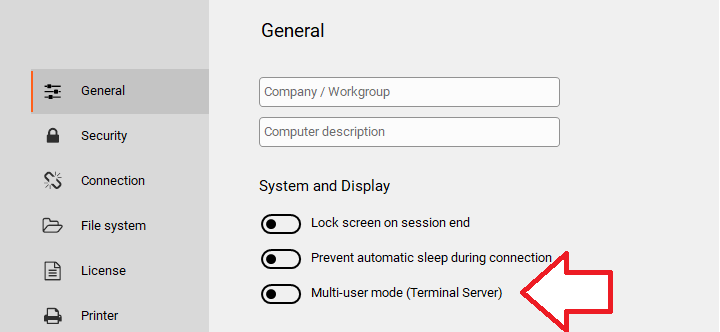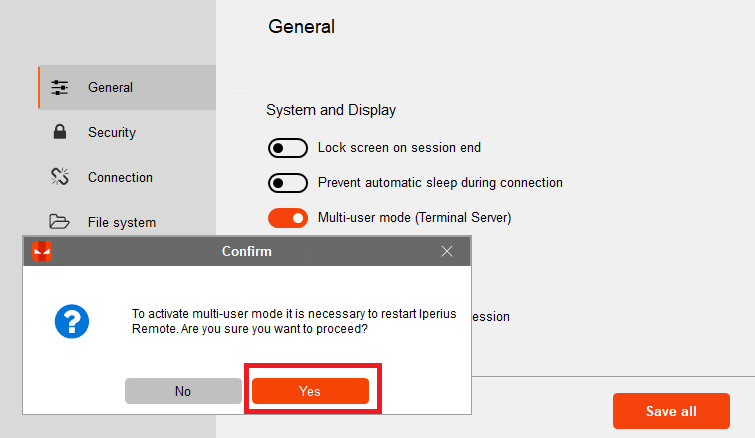← All Tutorials
How to Enable Multi-User Mode on Iperius Remote for Terminal Server: Complete Guide
In the modern business context, remote management of multi-user servers has become a fundamental need. IT infrastructures that involve the use of Terminal Servers (RDP/Remote Desktop Services) must guarantee simultaneous, independent and secure access by multiple users. In this scenario, Iperius Remote Multi-User Mode represents a powerful solution, easy to configure and perfectly suited to the Windows server environment.
Unlike the classic remote connection to the console session, the Multi-User mode allows you to:
-
Connect independently to remote desktop sessions of different users.
-
Simultaneously manage multiple connections on the same server, without interference.
-
Automate remote control even in unattended environments (unattended mode).
Let’s see in detail what requirements are necessary and how to activate this feature to use it at its best.
Requirements for Connecting to Users’ RDP Sessions
To correctly connect to the various active user sessions on the Terminal Server, two essential conditions must be satisfied :
-
The user’s remote desktop session must be active (the user must already be connected to the server via RDP).
-
The device from which you connect must have an Iperius Remote Medium license or higher.
Only if these requirements are met will it be possible to see and select the individual sessions available within the Iperius Remote console.
Enabling Multi-User Mode on Iperius Remote
-
Open Iperius Remote on the remote host and access “Settings”. In the “General” tab, check the “Multi-User Mode” option:

- After activating the option, Iperius Remote will automatically restart in unattended mode.

💡 In this mode, Iperius Remote maintains the main ID associated with the console session , while a specific and separate ID is generated for each active user session via remote desktop .
Why is it Useful for Businesses?
This feature is particularly strategic for companies that:
-
They use multi-user Windows servers to host management software, ERP or other shared tools.
-
They want to provide technical support or remote assistance for specific users , without disconnecting the console session.
-
They need centralized yet flexible access management, ideal for MSPs, help desks and IT managers.
📌 Competing solutions such as TeamViewer offer similar functionality, but Iperius Remote stands out for its competitive cost , ease of use and native integration into Windows Server environments .
Conclusion
Iperius Remote’s Multi-User mode is an indispensable tool for those who work in complex server environments , where collaboration and support must occur in parallel and in a personalized way. Activating it is simple, but the advantage it offers in terms of efficiency and control is enormous.
For further technical details or assistance, you can contact Iperius support or consult the official documentation .
For any questions or doubts regarding this tutorial,
Contact us